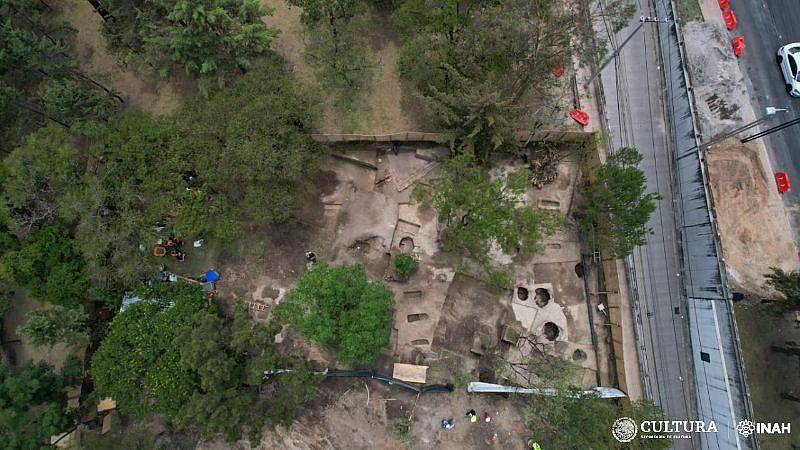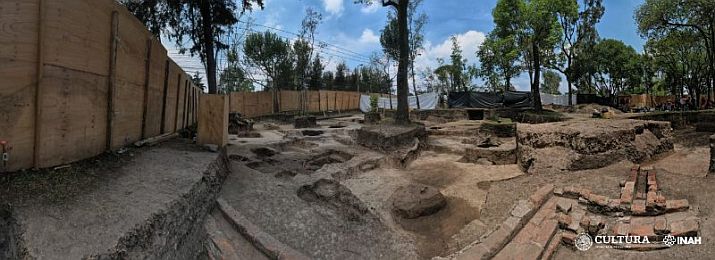
Mexico City – Close to the bustling Constituyentes Avenue, a team of specialists from the National Institute of Anthropology and History (INAH) has made a groundbreaking discovery: a series of pre-Hispanic funerary graves, including ten truncated conical tombs dating back around 3,500 years. This revelation comes as part of the ongoing construction of Cablebús Line 3, a crucial element in the comprehensive mobility plan of the Chapultepec, Nature, and Culture project by the Ministry of Culture of the Government of Mexico.
Situated at the edge of the third section of the Chapultepec Forest, near the Cri-Cri Park, this archaeological site is notable for being the first to uncover funerary architecture from the first agricultural villages at an altitude of 2,416 meters above sea level in the western part of CDMX.
The coordinator of the archaeological excavations, María de Lourdes López Camacho, suggests that the discovery points to a significant village’s existence during the Early and Middle Preclassic periods (2500-400 BC) in the Lomas de Chapultepec area. The community predates the Xitle volcano eruption and the formation of the Pedregal de Coyoacán, providing an extraordinary glimpse into the past, with the subsoil preserved intact for over 3,000 years.

The excavation, initiated in June 2023 near Constituyentes Avenue, revealed a dozen truncated conical tombs, each with a unique inverted cone shape, referred to as bottle or bell tombs. These tombs, typically found in other regions of ancient Mexico, are estimated to date back to the Middle Preclassic period.
Among the tombs, five contained human remains, primarily in a flexed form, with four identified as female and one as male – mostly juvenile adults. Notably, the archaeological team discovered rectangular cists at a higher level, suggesting the prolonged habitation of the village beyond the Preclassic period.
Artifacts recovered from the tombs include deer antlers, sgraffito tecomates, concave-convex cups, female figurines, and a slate disc, possibly imported from the Gulf coast. These items, along with figurines with schematic features known as “ghosts,” have been transported to the National Museum of History for further study.
The findings offer a glimpse into the complex social practices and productive activities of the Preclassic era, shedding light on the early roots of Mesoamerican societies. The ongoing study promises to unravel more secrets, shedding light on the ancient communities’ daily lives and the cultural tapestry that laid the foundation for centuries to come.
Source: inah.gob.mx






